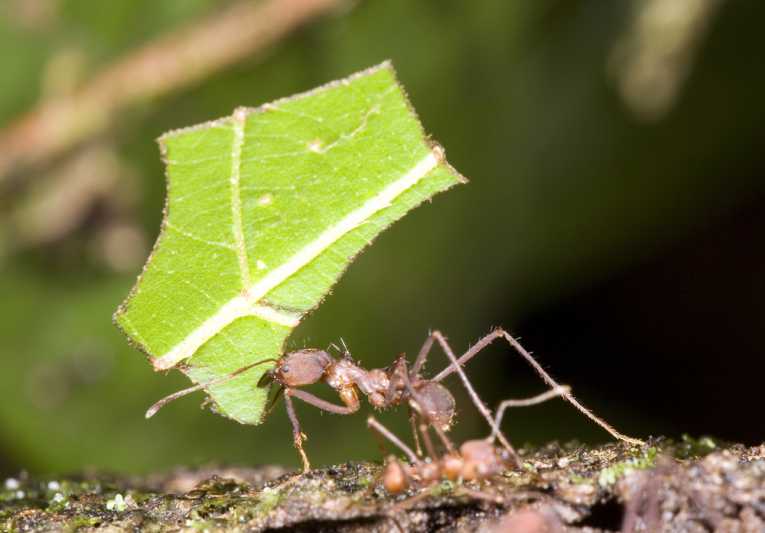Leafcutter ants (Atta spp.) are the amazing ants with the attractive antics of transporting leaves to culture fungi. Rather like a city's motorway system, the ant must organise paths to efficiently allow transport without using up energy in overlong routes. Surprisingly, the width is as important as in any motorway. Bruce and Burd author this paper from Monash University in Melbourne., published in the Proceedings of the Royal Society B: Biological Sciences.
Leaf-cutting ants with large colonies tend to have low rates of energy consumption. If resource acquisition rate is compared to network size and worker numbers, we should see this relationship. As traffic is bidirectional in Atta colonies, the obvious comparison to an organisms blood system may be misplaced, but the city analogy could hold. Trails are not only scent defined (pheromonic), but are extended to 200m (and 25m high in foraged trees) as physical corridors that are maintained by cutting, clearance and rubbish collections. A very branched system develops in a radial pattern, showing essentially the foraging history over a long period.
At the rush hour in Central America, the ants pass both ways along their pathways in equal numbers. Foragers do not always carry leaves. In a sort of competition, 87% of Trinidadian Atta cephalotes carried fragments of leaf, but only 33% were presumed to carry fragments in La Selva in Costa Rica. An average of 50% was taken as the figure generally.
Wide trails enhanced flow more than expected. The authors think that trail edges interfere with foragers more than other foragers. This means that the wider the trail, the less likely the "edge effect." The impact of trail length on foraging rate was heavy in both predicted and simply measured relationships. More foragers enhance the flux with little interference between foragers measurable as their numbers increase. Results like these indicate that we can possibly use blood (vascular) flow as another analogy to the ants' transport system. Individual ants create inefficiency if they forage a long trail. Recruitment of new workers onto the trail could counter this inefficiency, but this comprises investment of more of the workforce. Mass recruitment is an ecological forte of ants, so we need a study to determine how the proportion of the workers recruited to foraging is decided.

*Is this a city transport network or ant art? - Credit: Shutterstock
As for the city analogy, the human example is different in that they are more decentralised. The traffic volume is concentrated on a small fraction of road networks, while Atta traffic also builds heavily where there are permanent "trunk-trails." Length of roads and trails also produce similar results when compared with populations in the equations which Andrew Bruce and Marin Burd employ successfully in their paper. They used the Smithsonian Tropical Research Institute and the Organization for Tropical Studies as experimental centres for their sites. The 18 colonies of ants studied lived in closed canopy forests on Barro Colorado Island, Panama and in the Atlantic lowland forest of Costa Rica.
*The diagram is a city transport blueprint!










